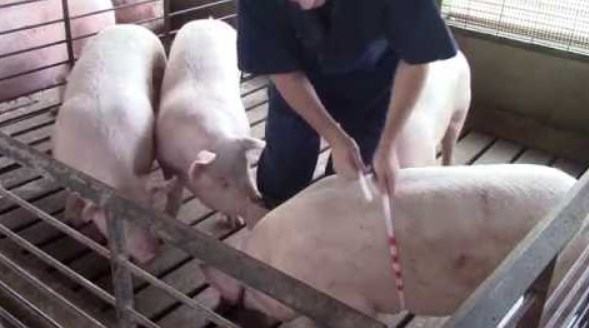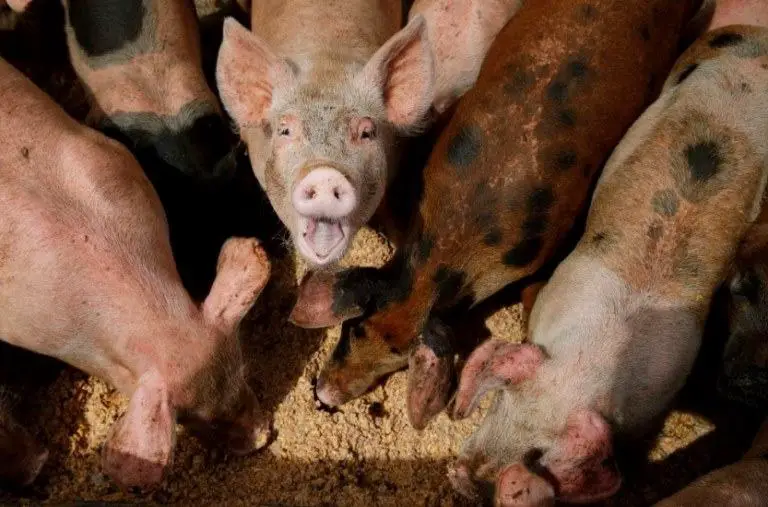No products in the cart.
Pig
Average Weight Of A Pig At Slaughter
If you are raising pigs for meat, it is essential to know when to slaughter them to maximize swine production efficiency. The right moment is very much dependent on age, condition, and average weight of a pig at slaughter.
While the first two factors can be simply defined, the weight of a pig is affected by many different factors, including breed, fat and muscle percentage, cutting order, how much time a pig hangs in the cooler, and so on.
*This post may have affiliate links, which means I may receive commissions if you choose to purchase through links I provide (at no extra cost to you). As an Amazon Associate I earn from qualifying purchases. Please read my disclaimer for additional details.
Why there is an optimum slaughter weight for a pig?
Studies have shown that as a pig grows, it takes more feed per unit of gain, which means their efficiency at converting feed to weight decreases. Until now, people have had only a vague idea when pigs stop gaining weight, so they tend to slaughter pigs at ever-increasing slaughter weights to reduce feed cost and maximize profitability.
Hence, a so-called optimum slaughter weight for pigs has been introduced.
What is the average weight of a pig at slaughter?
The best weight to butcher a pig is subject to what types of meat it is going to be processed further into.
Normally pigs of 4 months to one-year-old are slaughtered for pork and bacon because that is when they reach the ideal weight for those products. More detailed information is in the table below.
| Poker | 50 – 55 kg
(110 – 121 lbs) |
These lighter pigs produce pork chops. Normally achieved from ages 4 to 6 months, depending on breed. |
| Cutter | 56 – 65kg
(123 – 143 Ibs) |
These heavier pigs are raised to produce larger joints. Usually achieved between 6 and 8 months. |
| Baconer | 66 – 85kg
(146 – 187 Ibs) |
These pigs are reared for bacon and raised for 8 to 10 months. |
Pigs of 80 to 100 kg (176 – 220 Ibs) are considered as heavy ones. For pigs over 100 kg (220 Ibs), their meat is used for sausage production.
One more thing, the average butcher weights of pigs vary among countries based on their need of pork. For example, while it is 87 kg in America, it is 83.3 kg and 78 kg in the UK and South Africa, respectively. However, there has been a tendency to increase the average weight of a pig at slaughter.
How much meat you will get from a 250lbs pig?
Not all parts of pigs are usable. The saleable carcass weight obtained from a live pig is only about 72 – 74%. Given that, the actual percentage of edible meat is just 64% with prime cuts of only 48% of live weight.
For example, only about 144 Ibs of 250 ib. hog is yielded for retail cuts.
After the slaughter and dressing procedure, from a 250 Ib. live hog, we have a 180 Ibs. dressed as the remaining part including the blood, internal organs, hair, and other inedible components is removed. The removal parts weigh approximately 70 Ibs, about 28% of a hog’s live weight.
After that, it is sanitarily dressed, hung on a rail, and placed into a cooler.
While it is deeply chilled in a cooler, another 20% of its weight is reduced bringing the 180 Ibs carcass to 144 Ibs of retail cuts. This includes bone dust, fat trimming, boning, grinding, and moisture loss.
Hams and bacon are cured and smoked after the cut.
How to calculate a pig’s weight?
Employ the method below using only a measuring tape and a calculator to estimate the live weight of a pig if you have a limited number of pigs to weigh and the absolute accuracy is not required.

- Measure how long it is from the ears to the base of the tail in inches. The pig must be standing or restrained to ensure the calculation is accurate.
- Measure your pig’s front leg girth in inches
- Multiply girth x girth x length and divide by 880 to have the weight in kg or 400 for the weight in lbs.
For example, if an adult pig has a girth of 50 inches and body length of 60 inches, the calculation would be (50 x 50 x 60) / 880 = 171 kgs and (50 x 50 x 60) / 400 = 375 Ibs.
Another easy way is using the best livestock scale!
Conclusion
Determining when to slaughter your pig based on its weight is important as there is a close-knit relationship between the average weight of a pig at slaughter and cut yield and meat quality. A number of experiments have been carried out to help pig owners make decisions on the optimum slaughter weight for pig.
Though the information presented above cannot fully cover all aspects of this field, we hope it provides you with some guidelines so that you can investigate further.

